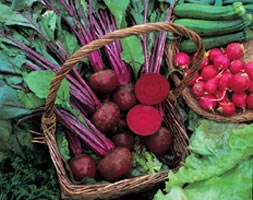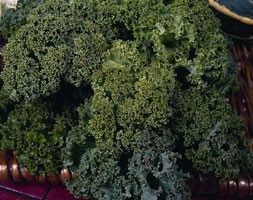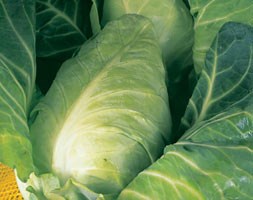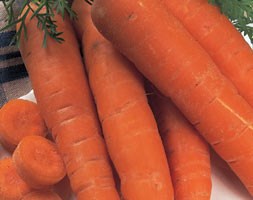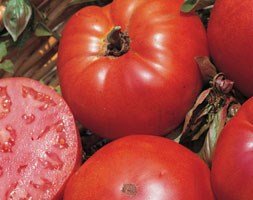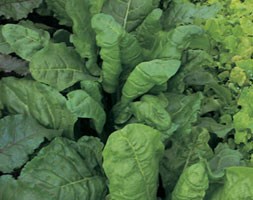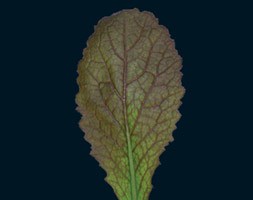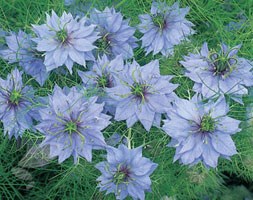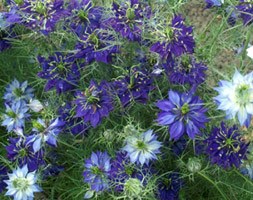Price reductions at Crocus
by Sarah - July 12th, 2013.Filed under: Crocus, Price Reductions.
Crocus reduced the price on these products today
beetroot ‘Boltardy’ (beetroot Boltardy) was £0.69 now £0.59
Position: full sun or partial shade Soil:tolerates most A classic beetroot, super-reliable and very tolerant of weather extremes, so you can start your crop earlier in the year and finish harvesting later. Produces delicious deep purple, spherical roots which are at their tenderest harvested just larger than a golfball. The leaves can also be picked sparingly as a tasty spinach substitute. Growing Instructions: In spring, make a shallow drill 1cm deep and sow the large, easy-to-handle seeds about 15cm apart. Cover again lightly with soil and water in. Seeds produce multiple seedlings, so thin to leave one plant to mature at each spot. Beetroot can also be grown in containers: sow direct into the compost allowing about five seeds to a 45cm pot. Sow a half-row of seeds every three weeks for a regular supply of roots from early summer well into autumn. Sow: March-July Harvest: Late May to September Approximate quantity: 275 seeds
kale ‘Dwarf Green Curled’ (kale) was £0.79 now £0.69
Position: full sun or light dappled shade Soil: well-drained and rich. One of the prettiest of all the kales, with a dense head of intricately frilled leaves on a robust plant about 60cm tall. Despite its delicate looks this kale is incredibly hardy and shrugs off the harshest of winters, providing plenty of delicious pickings through the coldest months of the year. Growing Instructions: Sow direct into drills in a well-prepared seed bed in spring and thin seedlings to 7cm apart as they grow. When they reach about 15cm tall, transplant to their final growing site leaving about 60cm between plants. Keep well-watered and protect from pigeons until established: cut young leaves from the crown of the plant once they reach about 10-15cm long. If you cut the whole crown out at once and leave to grow on and you’ll get a secondary crop of tender, broccoli-like shoots just beneath the cut. Sow: May-July Harvest: November to January Approximate quantity: 425 seeds.
cabbage ‘Durham’ (cabbage) was £0.79 now £0.69
Position: full sun Soil: fertile, well drained, moisture-retentive and firm A classic spring cabbage variety for picking loose-leafed as greens, or leaving to heart up and produce a large, handsome pointed head with an outstanding flavour and crisp texture. As the name suggests you can start picking this versatile spring vegetable particularly early in the season, providing a welcome harvest when there’s little else around. Growing Instructions: Sow seeds in late summer into well-prepared seed beds in shallow drills 1.5cm deep. Keep well watered and thin seedlings to 5cm apart as they appear. Once plants are 10cm tall, transplant to their growing site, planting them 35-40cm apart and about 1.5cm deeper than they were in the seedbed and firming well. Protect from slugs and net against pigeons. Growing spring cabbage under horticultural fleece or mesh will prevent caterpillar damage. Sow: July-August Harvest: April-May Approximate quantity: 450 seeds.
carrot ‘Autumn King’ (carrot) was £0.79 now £0.69
Position: full sun Soil: humus-rich, moisture retentive soil A handsome, richly orange-coloured maincrop carrot which has stood the test of time and is an allotment favourite for its reliability and excellent flavour. The roots are long, tapering and sturdy, and store well: they can be left in the ground through winter or lifted and packed into boxes of damp sand, where they’ll stay good as new for months. Growing Instructions: Sow sparingly direct into shallow drills and cover lightly with soil. Cover early and late sowings with cloches. Thin seedlings carefully to 2cm apart, watering beforehand to avoid disturbing nearby roots, and working in the evening when carrot fly are less numerous. To further avoid carrot fly attacks, grow crops under horticultural fleece. Grow perfect, straight carrots by making holes with a crowbar, filling with free-draining, stone-free compost and sowing seed on top. Sow: April to June Harvest: August to October Approximate quantity: 2000 seeds.
tomato ‘Marmande’ (beefsteak tomato) was £0.79 now £0.69
Position: full sun Soil: humus-rich, moisture retentive soil The flavour of this wonderful old French heirloom beefsteak variety is so rich, sumptuous and utterly tomatoey it sets the standard for all others to measure up to. The massive fist-sized fruits are heavily ribbed and produce very few seeds, slicing into thick, generous and juicy wedges: layered with mozzarella and avocado and drizzled with vinaigrette they’re an unforgettable treat. Growing Instructions: Beefsteak tomatoes need a greenhouse to produce fruit reliably. Sow under cover somewhere frost-free, potting on seedlings individually as they grow. Once all danger of frost has passed, plant into greenhouse borders or into growbags. Tie in to supports and pinch out side shoots: water regularly, keeping the soil moist at all times, and feed weekly once flowers form. Avoid letting plants dry out and then drenching them with water, as the sudden increase in water content may split the skins of your tomatoes. Instead keep water levels constant at all times. Sow: January-March Harvest: July-September Approximate quantity: 75 seeds.
perpetual spinach (perpetual spinach) was £1.49 now £0.74
Position: full sun or partial shade Soil: fertile, moisture-retentive soil Enjoy all the pleasures of growing spinach without any of the trials and tribulations with this super-reliable leafy vegetable. Big, beefy and productive, it looks like spinach and it tastes like spinach: but unlike spinach it doesn’t bolt, even in dry conditions, and it’s bone hardy in winter so you can grow it all year round. Growing Instructions: Sow the large, corky seeds direct where they are to grow in shallow drills. Thin seedlings gradually until plants are 20cm apart (the thinnings can be eaten as baby salad leaves). Alternatively, sow one or two seeds at 20cm intervals and pinch out unwanted seedlings, allowing the strongest to grow on. Keep netted against pigeons while young. Pick as a cut-and-come-again crop, taking outside leaves but leaving the crown intact, and plants will continue producing new leaves over a very long period. Sow: March-August Harvest: All year round Approximate quantity: 250 seeds.
mustard ‘Red Giant’ (mustard) was £1.29 now £0.79
Position: full sun Soil: humus-rich, moisture retentive soil Peppery and packed with flavour, this easy-to-grow oriental salad leaf will lift your cooking to a whole new level. Use sparingly to add pizazz to lettuce leaf mixes, scatter on pizzas for some extra bite, or use in a spicy stir-fries. It’s a good-looking plant, too, with large, red-tinged leaves intensifying to deep burgundy purple in cold weather. The flavour gets hotter and more mustardy as plants mature, so for a milder taste pick leaves young. Growing Instructions Sow sparingly in shallow drills in a sheltered spot in sun or light shade. Once seedlings appear, thin to 20cm apart if growing to full size: if harvesting as baby leaves plants can grow as close as 3cm. Keep well watered and if you protect late sowings with cloches they’ll keep growing throughout the winter. Sow: April to September Harvest: June to October Approximate quantity: 350 seeds
Nigella damascena ‘Miss Jekyll’ (love-in-a-mist) was £1.99 now £0.99
Position: full sun Soil: any well-drained soil Rate of growth: fast growing Flowering period: July to September Flower colour: sky-blue Other features: excellent cut and dried flowers Hardiness: fully hardy Sky-blue, disc-like flowers appear on upright stems clothed in wispy-tipped foliage from midsummer. This easy to grow annual well-drained border. Ideal for the novice or young gardener, the blooms make excellent cut or dried flowers. Garden care: Best sown in situ, 5mm deep. Prepare the seedbed by incorporating some composted organic matter, remove any stones and rake to a fine tilth. Sow in autumn if you want early flowers the following summer, or in mid spring for a later crop. Thin them out when they are large enough to handle allowing 30cm between each. Deadheading regularly will help prolong the flowering period into autumn. Support the plants with twiggy branches in exposed gardens. Sow: September-October or March-May Flowering: June-September Approximate quantity: 500 seeds.
Nigella damascena ‘Oxford Blue’ (love-in-a-mist) was £1.99 now £0.99
Position: full sun Soil: any well-drained soil Rate of growth: fast growing Flowering period: July to September Flower colour: deep blue Other features: excellent cut and dried flowers Hardiness: fully hardy Throughout summer extra-large, deep blue flowers appear amid the decorative, finely-cut foliage. This tall love-in-a-mist is perfect for a sunny, well-drained cottage-garden border or wildflower meadow. It is extremely easy-to-grow, and the dried seed-heads are valuable for use in winter flower arrangements. Garden care: Best sown in situ, 5mm deep. Prepare the seedbed by incorporating some composted organic matter, remove any stones and rake to a fine tilth. Sow in autumn if you want early flowers the following summer, or in mid spring for a later crop. Thin them out when they are large enough to handle allowing 30cm between each. Deadheading regularly will help prolong the flowering period into autumn. Support the plants with twiggy branches in exposed gardens. Sow: September-October or March-May Flowering: June-September Approximate quantity: 500 seeds.







